Most of the digital devices we use every day use the DC voltage generated by the AC adapter as the input voltage, and then the voltage is raised and lowered by the power IC. When a semiconductor with a high power consumption is used, a smoothing capacitor of 100 μF or more is particularly used. Further, as semiconductors are reduced in voltage and speed, in order to maintain their operational stability, a low-impedance type smoothing capacitor is required . Therefore, Murata Manufacturing Co., Ltd. (hereinafter referred to as " Murata ") has further expanded its lineup of high-capacity multilayer ceramic capacitors above 100μF.
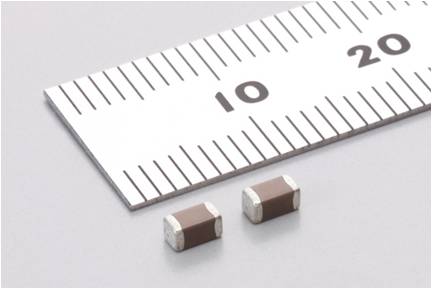
Figure 1. 100μF multilayer ceramic capacitor (example: 3.2x2.5mm size: 330μF)
Capacitors are roughly classified into several types in FIG. 2 according to their basic structures and materials. From the figure, we can see that the multilayer ceramic capacitor is slightly insufficient in terms of the temperature dependence of the electrostatic capacity and the effective voltage drop (DC bias characteristic) due to the applied voltage, but its miniaturization, high reliability, and high price competitiveness. The advantages of low impedance/low ESR*1/low ESL*2 are significant. Therefore, in the field of small and large-capacity capacitors today, multilayer ceramic capacitors have become mainstream. However, large-capacity smoothing capacitors exceeding 100 μF must have low impedance. The current mainstream of these products is conductive polymer electrolytic capacitors.
*1. ESR (Equivalent Series Resistance equivalent series resistance): The actual composition of the capacitor impedance.
*2.ESL (EquivalentSeriesInductor equivalent series inductance): The small inductance component of the capacitor. The impedance of the frequency domain above the resonant frequency is dominated by the ESL.

Figure 2. Advantages/disadvantages of multilayer ceramic capacitors (Source: Murata Manufacturing Co., Ltd. )
Nowadays, the technology that supports the large-capacity of multilayer ceramic capacitors is constantly being innovated. Murata Electronics has been able to guarantee a high-precision stack of 1000 μm or more with a high-precision dielectric layer of less than 1 μm to produce production technology and thin layer technology. In addition, more than 100 μF Layer ceramic capacitors are also in mass production.
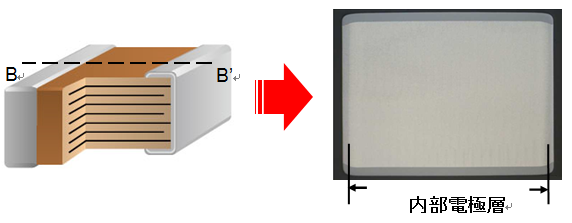
Figure 3. Internal structure of a ceramic capacitor (3.2x2.5mm / 330μF) above 100μF
In recent years, the semiconductors used in digital devices have been continuously reduced in voltage, and the capacity reduction caused by the DC bias characteristics has been decreasing. Therefore, digital devices have begun to use multilayer ceramic capacitors of 100 μF or more as smoothing capacitors.
At present, the products of 2.0x1.25mm/X5R/4V/100μF, 3.2x1.6mm/X5R/6.3V/100μF, 3.2x1.6mm/X5R/4V/220μF have been commercialized. In addition, multi-layer ceramic capacitors (maximum capacity: 300 μF) of 100 μF or more in various projects have also been commercialized.
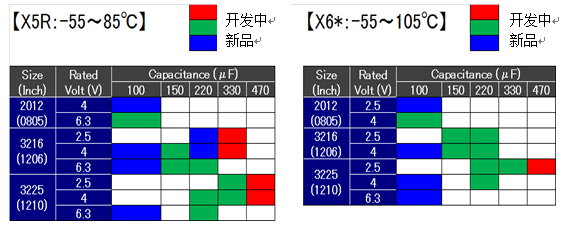
Figure 4. Product lineup of multilayer ceramic capacitors above 100μF (August 2015)
In Murata's latest product lineup, there are X5R models (operating temperature range: -55 to 85 °C) for general consumer markets, and X6* ​​for applications with high power consumption and high internal temperature. Operating temperature range: -55 to 105 ° C), in addition to the development of larger capacity products are also planned.
At present, in order to ensure the stability of a low voltage and high-speed semiconductor power supply line used in digital equipment, it is necessary to control voltage fluctuations caused by fluctuations in ripple voltage and load. As a smoothing capacitor, it is necessary to achieve a capacity of 100 μF or more and a low impedance. Previously, the market solution was mainly to use a conductive polymer electrolytic capacitor. Murata has expanded its lineup of multilayer ceramic capacitors above 100μF to replace conductive polymer electrolytic capacitors.
Although the capacity of a multilayer ceramic capacitor is lower than that of a conductive polymer electrolytic capacitor, it is still highly replaceable. This is because the multilayer ceramic capacitor has a low impedance and ESR and responds well to voltage changes. Fig. 5 is an impedance, ESR-frequency characteristic of a representative conductive polymer tantalum electrolytic capacitor and a multilayer ceramic capacitor. The switching frequency of the power IC used in digital equipment is above 100 kHz. As can be seen from the figure, compared with the conductive polymer tantalum electrolytic capacitor, the multilayer ceramic point is easy to not only have the same capacity as the product, but also has a lower capacity, impedance. And ESR is also very low.
In addition, when the resonance frequency is high frequency, the multilayer ceramic capacitor has a very low impedance compared to the conductive polymer tantalum electrolytic capacitor, and is very useful for high frequency squelch.
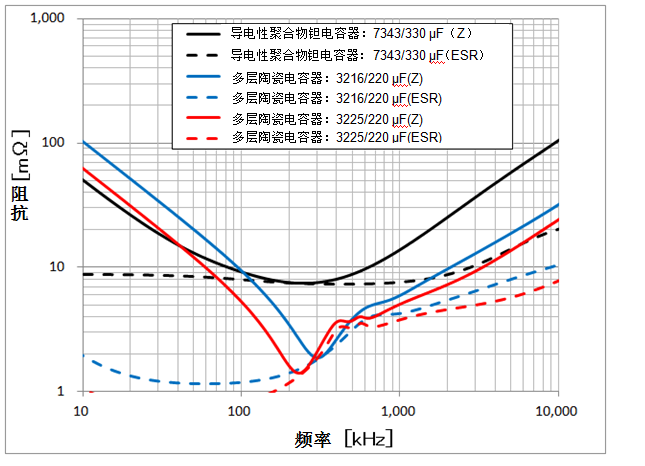
Figure 5. Comparison of impedance/ESR-frequency characteristics
Murata used the evaluation substrate of the DDR power supply IC on the PC for replacement evaluation. The evaluation circuit and evaluation results are shown in Fig. 6. The evaluation substrate used a DC voltage of 1.4 V, and in the initial state, a conductive polymer tantalum electrolytic capacitor (7.3 x 4.3 mm size / 2.0 V / 330 μF / M deviation) was used as a smoothing capacitor at two places. Then, a conductive polymer tantalum electrolytic capacitor was replaced with a multilayer ceramic capacitor of 150 μF and 200 μF (3.2 x 1.6 mm size / 6.3 V/M deviation), and the voltage change at the ripple voltage/spike voltage and load change was evaluated. This evaluation has been adjusted in advance to ensure the stability of the evaluation substrate.
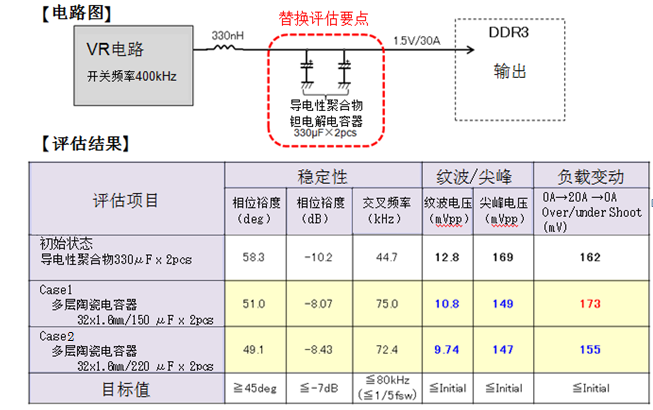
Figure 6. Replacement evaluation results for conductive polymer tantalum electrolytic capacitors
As can be seen from the figure, when a multilayer ceramic capacitor is used, although the nominal capacity value is lower than that of the conductive polymer tantalum electrolytic capacitor, the ripple voltage is indeed improved. This is because the multilayer ceramic capacitor at the switching frequency has a low impedance and ESR, controls the voltage variation caused by the switching frequency, and improves the ripple voltage. In addition, there is also an improvement in the peak voltage. This is due to the low ESL of the multilayer ceramic capacitor, which controls high frequency noise and improves the peak voltage.
However, in the load variation test in which the current varies greatly, when a 150 μF multilayer ceramic capacitor is used, the voltage variation result is not satisfactory. This is related to the effective capacity of the load change test when the capacitor is applied with a voltage. The multilayer ceramic capacitor used in the test has a lower nominal capacity value than the conductive polymer tantalum electrolytic capacitor, and the DC bias characteristic results in a lower effective capacity value, so the test result is not satisfactory. However, with a larger capacity of 220μF, the evaluation results of the load change test can be improved.
Since a low-voltage-driven semiconductor is very popular, as a smoothing capacitor for a power supply IC that supplies a DC power supply, a conductive polymer electrolytic capacitor having a large capacity and a low ESR characteristic is generally used, but a server such as a server using such a product is used. More attention has been paid to performance such as miniaturization and long-term reliability, and the same requirements have been imposed on smoothing capacitors. Murata attaches great importance to the development of multilayer ceramic capacitors of 100 μF or more with miniaturization, high reliability, and lower impedance/low ESR/low ESL characteristics. Market transactions are very active today, and it is believed that the expansion of Murata's future product lineup will contribute to the development of the electronic equipment market.
Milestone shipping label printer 4x6 inch thermal waybill printer
Printing Method:Thermal Line PrintingInterface:USB/ USB+BT
Paper type:Thermal Label Paper
Printing Width:38-108mm
Paper width:40~120MM
Paper length:30~250MM
Support OS:Wins/Mac/Android phone/1/Linux
ShengXiaoBang is the Barcode scanner and Printer manufacturer in China.
with over 6years export experience that we know the quality is our soul.
Many clients re-order to us for our stable quality and competitive price.
please contact us for more information and you will get what you really want.
Rollo Printer,Rollo Label Printer,Rollo Thermal Printer,Rollo Shipping Label Printer
ShengXiaoBang(GZ) Material Union Technology Co.Ltd , https://www.sxbgz.com
